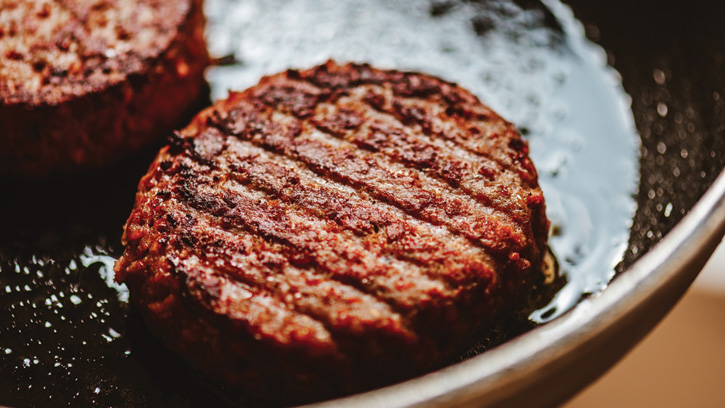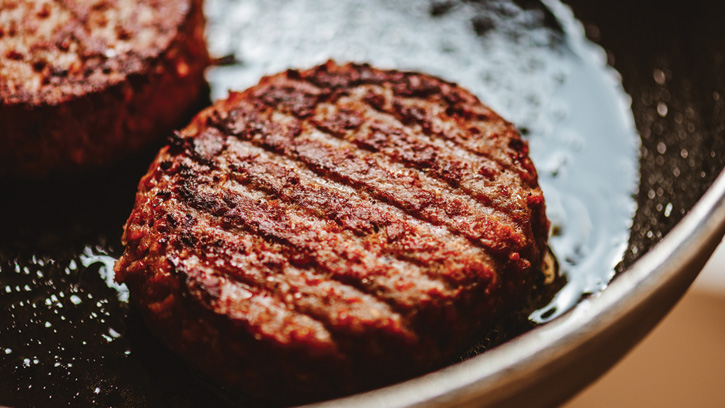Helping Meat Analogues Stick Together
Science Forward | RESEARCH
Meat analogues need binding agents to keep the ingredients together. In animal meats, proteins do that job.
Methylcellulose is currently the predominant choice for meat analogue products. While it works well from a functionality perspective, says Pascal Moll, a recent doctoral student at the University of Hohenheim’s Institute of Food Science and Biotechnology, it is a chemically modified cellulose derivative that’s also used for things like household glues. And that is not exactly a good marketing angle. “This is really just not what consumers like in their food,” says Moll, who is now working in the food industry.
Moll and his colleagues wanted to find a novel clean label binding agent. They identified a mix of proteins and carbohydrates that were potentially suitable candidates because of their good stickiness levels. A previous research paper investigated the influence of pH and biopolymer concentration. They followed that up with a new study on how stickiness is influenced by different ratios of proteins and carbohydrates in the form of pea proteins and apple pectin.
Pea proteins were chosen because they’re already accepted by consumers, are widely available, are not one of the more common allergens, and have a better reputation than soy, says Moll. The researchers chose pectin because it’s a well-known ingredient, also already accepted by consumers in foods, and different types are available on the market. “From a research point of view, it’s quite nice to also use different kinds of pectin because they are so well researched, and you can easily use different pectins in order to tune viscosity or adhesion or cohesion,” explains Moll.
The researchers mixed the two ingredients in various ratios—from only pea proteins to only pectins and various proportions in between. They measured the stickiness of each sample with a probe tech test, where a probe is placed on the sample and pulled away. The force required to pull the probe away is measured to provide the level of stickiness, Moll explains. They then tried to match up the probe results with textures of the mixes and found that they correspond well with their viscoelasticity.
Good Glue
It turns out that the textural parameters required for food stickiness are the same used for pressure-sensitive adhesives like stickers and sticky notes. “It was quite surprising,” says Moll. “And it actually turned out that in food, it is pretty much the same.”
The question was how to create those parameters for food, says Moll. Their results showed that pea proteins alone don’t work because the resulting mix was too elastic and soft and didn’t cohere. Using only apple pectin created a mix that was too rigid and didn’t adhere. “You have to have a certain balance between solid and liquid properties,” says Moll. That balance, according to this research, is 33% apple pectin and 67% pea proteins.
What makes a good stickiness level, however, depends on the application. In the food industry, Moll points out, stickiness is usually something to be minimized or avoided altogether because sticky foods can adhere to processing equipment and surfaces. That can lead to contamination and malfunctioning equipment. But for foods, the ability to manipulate the stickiness level of a binding ingredient is important.
However, the term “binding agent” is often misused, says Moll, who has co-authored a review paper that seeks to clarify use of the term. For example, plant-based burger patties have larger particles to “glue” together, which requires a high stickiness, whereas a sausage analogue needs more of a thickening behavior. “The term binding agent actually refers to ingredients that have different functionalities depending on the application,” he explains.
Moll and his colleagues are continuing research with studies on how the binding agents work with specific food products. They’ve also filed a patent for the formulation coupled with a specific processing approach.


